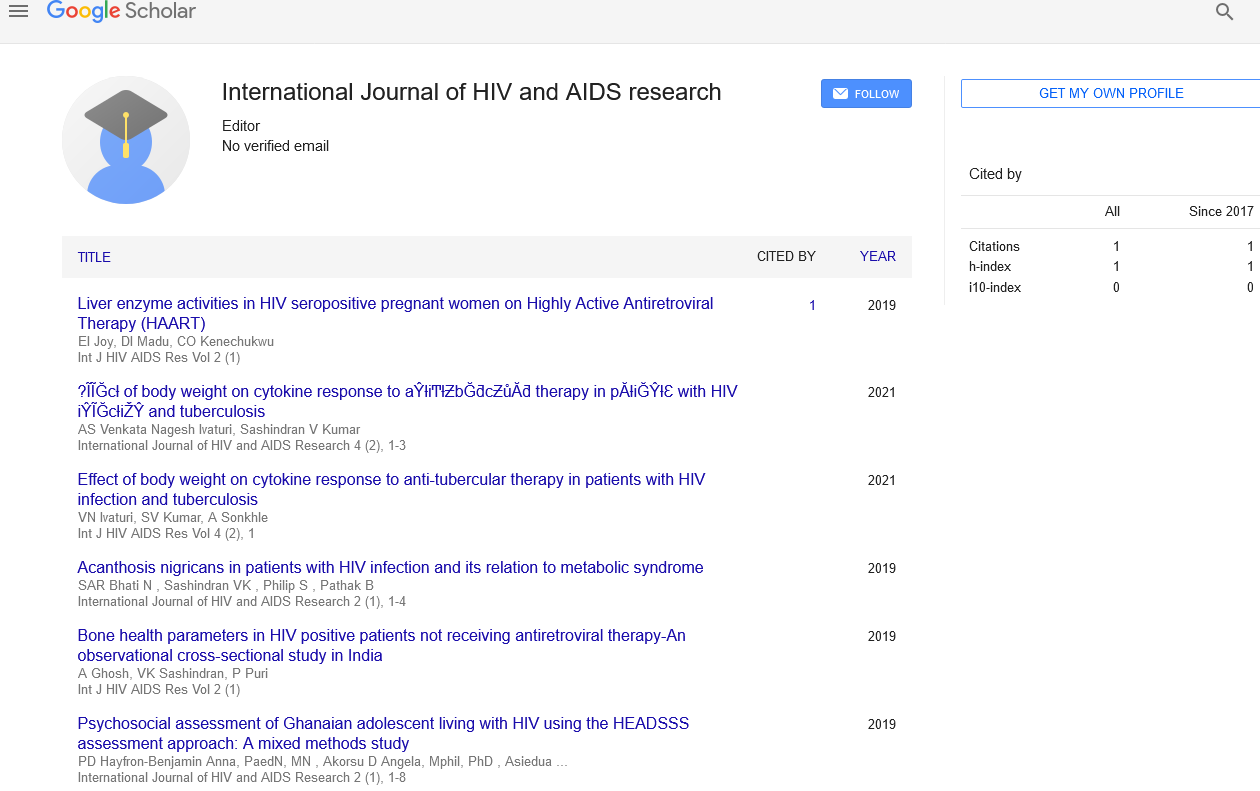An assessment of the national HIV AIDS strategy in the United States
Received: 07-Sep-2021 Accepted Date: Sep 21, 2021; Published: 28-Sep-2021
Citation: Geethanjali K. An assessment of the national HIV AIDS strategy in the United States. Int J HIV AIDS Res. 2021;4(5):1-1.
This open-access article is distributed under the terms of the Creative Commons Attribution Non-Commercial License (CC BY-NC) (http://creativecommons.org/licenses/by-nc/4.0/), which permits reuse, distribution and reproduction of the article, provided that the original work is properly cited and the reuse is restricted to noncommercial purposes. For commercial reuse, contact reprints@pulsus.com
Commentary
The first cases of AIDS in the United States were reported by the Centers for Disease Control and Prevention thirty years ago. Since then, almost half a million Americans have died of AIDS, and 1.1 million people in the United States are living with HIV.
The Obama administration produced and launched the National HIV/ AIDS Strategy for the United States in an attempt to re-energize the domestic response to the HIV epidemic (NHAS). Reduce new infections, improve access to care and health outcomes, and reduce HIV-related inequities are the three main goals of the NHAS.
New HIV infections are being reduced
The National HIV/AIDS Strategy (NHAS) has set a goal of lowering new HIV infections by 25% in the following five years. The prevalence of HIV and the pace of HIV transmission are both important factors in reducing HIV incidence. Many factors influence the rate of transmission, including serostatus knowledge, risk behaviour, and access to prevention and treatment resources. The life-extending effect of antiretroviral medication is predicted to increase HIV prevalence by 24 percent to 38 percent over the next ten years. As the number of people who can transmit HIV grows, the NHAS must focus on interventions that can limit the rate of HIV transmission.
The first challenge will be to identify the 21% of HIV-positive people who are unaware of their infection. According to studies, people reduce their sexual risk-taking behaviours after being diagnosed with HIV, and those who are unaware of their status are 3.5 times more likely to transmit HIV than those who are aware of their status. Increased HIV testing efforts are critical to locating these roughly 250 000 people. The Centers for Disease Control and Prevention (CDC) updated their HIV testing recommendations in 2006, recommending that all patients aged 13 to 64 be tested for HIV in all healthcare settings (unless the local prevalence of undiagnosed HIV infection is less than 0.1 percent).
Improving health outcomes and access to care
The NHAS’s second mission is to increase medical care access and health outcomes. Currently, 45 percent of HIV patients acquire AIDS within three years of receiving their diagnosis, implying that HIV patients are having trouble accessing health care and obtaining life-saving antiretroviral drugs. The Patient Protection and Affordable Care Act (ACA) extends Medicaid coverage to anybody under the age of 65 who earns up to 133 percent of the federal poverty line. The ACA also eliminates the disability requirement for Medicaid enrollment, which is particularly beneficial to persons living with HIV.
Although the Affordable Care Act (ACA) expands access to health insurance, the difficulty of connecting individuals to care and keeping them in it persists. Improved links between testing and care sites, as well as improved linkages to substance abuse treatment and mental health services, are also recommended in the NHAS. The use of new health delivery models, such as the patient-centered medical home, community health workers, and integrated medical information systems, should be explored by lead agencies tasked with achieving these goals, because these programmes have the potential to improve care coordination and retention.
Health inequalities are being reduced
The end goal of the NHAS is to reduce health disparities among HIV patients based on race/ethnicity and sexual orientation. Health inequalities connected with HIV are significantly severe than disparities associated with other medical diseases. For both racial/ethnic groupings, the rate of new AIDS cases is 9.7 times greater for Blacks and 3.3 times higher for Hispanics than for Whites, marking the biggest HIV-related health disparities. To address inequities, a multipronged strategy is required, which includes addressing patients’ financial circumstances, impediments to care, substance misuse, cultural norms, and sexual practises.





